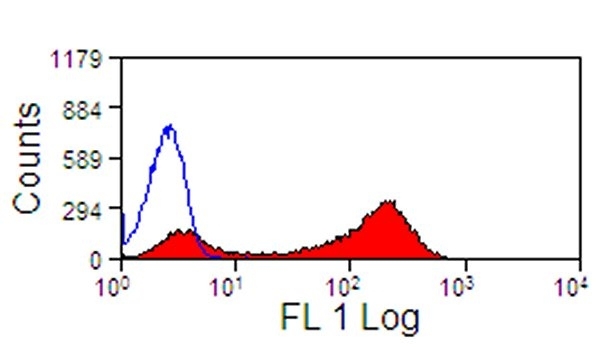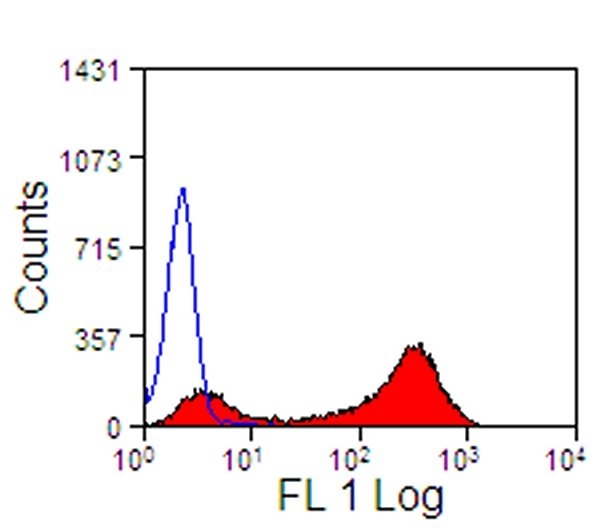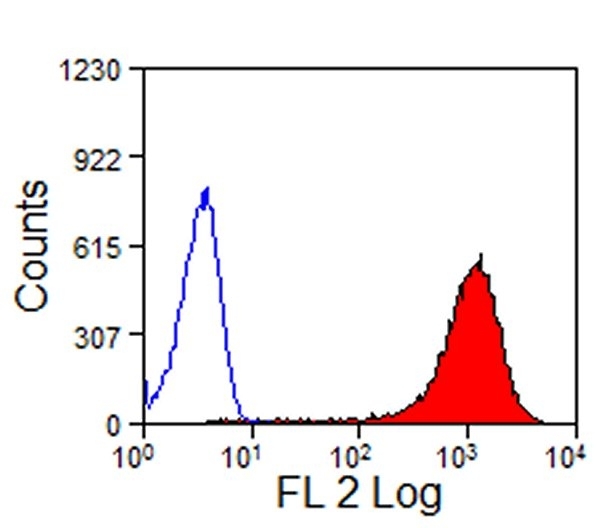CD13 antibody | CVS19



Mouse anti Horse CD13
- Product Type
- Monoclonal Antibody
- Clone
- CVS19
- Isotype
- IgG1
- Specificity
- CD13
| Mouse anti Horse CD13 antibody, clone CVS19 recognizes the equine CD13 cell surface antigen, also known as Aminopeptidase N, a single-pass type II membrane protein belonging to the peptidase N family with a molecular weight of between 150 - 170 kDa. CD13 is widely expressed by a range of cell types including all blood neutrophils, basophils, monocytes, fibroblasts, kidney epithelial cells, endothelial cells and mesenchymal stem cells, but not by T or B cells. It is involved in a broad spectrum of biological processes and is believed to be linked to a number of disease states including tumor invasion (Saiki et al. 1993). Mouse anti Horse CD13 antibody, clone CVS19 may be used for differentiating myeloid and lymphoid linage cells in tumors of the haematopoietic system. In addition to clone CVS19, other CVS clones recognising equine MHC and cell surface antigens are available. |
- Target Species
- Horse
- Product Form
- Purified IgG - liquid
- Preparation
- Purified IgG prepared by affinity chromatography on Protein G from tissue culture supernatant
- Buffer Solution
- Phosphate buffered saline
- Preservative Stabilisers
- 0.09% sodium azide (NaN3)
- Carrier Free
- Yes.
- Immunogen
- Equine leucocytes.
- Approx. Protein Concentrations
- IgG concentration 1.0 mg/ml
- Fusion Partners
- Spleen cells from immunized mice were fused with cells of the mouse X63-Ag8.653 myeloma cell line.
- Regulatory
- For research purposes only
- Guarantee
- 12 months from date of despatch
Avoid repeated freezing and thawing as this may denature the antibody. Storage in frost-free freezers is not recommended.
| Application Name | Verified | Min Dilution | Max Dilution |
|---|---|---|---|
| Flow Cytometry | 1/25 | 1/200 | |
| Immunohistology - Frozen | |||
| Immunoprecipitation |
- Flow Cytometry
- Use 10μl of the suggested working dilution to label 106 cells in 100μl
References for CD13 antibody
-
Kydd, J. et al. (1994) Report of the First International Workshop on Equine Leucocyte Antigens, Cambridge, UK, July 1991.
Vet Immunol Immunopathol. 42 (1): 3-60. -
Lunn, D.P. et al. (1998) Report of the Second Equine Leucocyte Antigen Workshop, Squaw valley, California, July 1995.
Vet Immunol Immunopathol. 62 (2): 101-43. -
Loftus J.P et al. (2006) Matrix metalloproteinase-9 in laminae of black walnut extract treated horses correlates with neutrophil abundance.
Vet Immunol Immunopathol. 113: 267-76. -
Dunkel, B. et al. (2009) Neutrophil and platelet activation in equine recurrent airway obstruction is associated with increased neutrophil CD13 expression, but not platelet CD41/61 and CD62P or neutrophil-platelet aggregate formation.
Vet Immunol Immunopathol. 131: 25-32. -
Radcliffe, C.H. et al. (2010) Temporal analysis of equine bone marrow aspirate during establishment of putative mesenchymal progenitor cell populations.
Stem Cells Dev. 19: 269-82. -
Soboll Hussey, G. et al. (2011) Evaluation of immune responses following infection of ponies with an EHV-1 ORF1/2 deletion mutant.
Vet Res. 42: 23. -
Aalberts, M. et al. (2012) Spermatozoa recruit prostasomes in response to capacitation induction.
Biochim Biophys Acta.1834: 2326-35. -
Maia, L. et al. (2013) Immunophenotypic, immunocytochemistry, ultrastructural, and cytogenetic characterization of mesenchymal stem cells from equine bone marrow.
Microsc Res Tech. 76: 618-24.
View The Latest Product References
-
Carvalho, A de M.et al. (2013) Isolation and characterization of equine peripheral blood-derived multipotent mesenchymal stromal cells
Pesquisa Veterinária Brasileira. 33 (9): 1151-4. -
Ziegler, A. et al. (2016) Identification and characterization of equine blood plasmacytoid dendritic cells.
Dev Comp Immunol. 65: 352-7.
- Synonyms
- Aminopeptidase N
MCA1084GA
If you cannot find the batch/lot you are looking for please contact our technical support team for assistance.
Please Note: All Products are "FOR RESEARCH PURPOSES ONLY"
View all Anti-Horse ProductsAlways be the first to know.
When we launch new products and resources to help you achieve more in the lab.
Yes, sign me up

